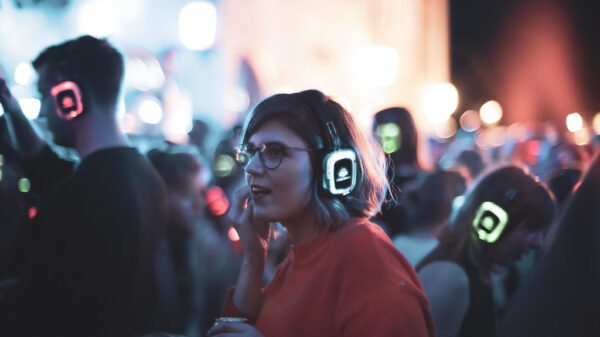Roar writer Jess Smith reviews Clubhouse, an audio-only platform launched in 2020.
Over the Summer of 2020, I heard whisperings about a new platform called Clubhouse. Curiously, it was an audio only platform – think of it as a live podcast with speakers and an audience. I am pretty social media savvy, so naturally I was eager to test out the platform myself. The only problem is you have to be invited onto the app. It’s not available in the public domain. Usually you’ll be invited by someone you know, who already has an account. Each user has a limited amount of invites. Some have been critical of this approach, as it limits access significantly. However, the exclusivity of the app has created buzz around the platform and done wonders from a publicity perspective. Despite the hype, I had to wait.
Community Culture
On a rainy afternoon in February, I got the text. Needless to say I was incredibly excited to finally experience the platform. I’d waited at least six months. At first instance, I found Clubhouse to be confusing. There’s only so far a written user guide can go so far in practice. Clubhouse has such a unique format that I was unsure where to even begin – it behaves nothing like Twitter or Instagram.
Fortunately, my confusion was short lived. Clubhouse allows you to become a member of a ‘club’, or attend meetings run by a ‘club’. Herein lies the first wonderful thing about the platform: its community. Relying on its algorithm based on your interactions, Clubhouse recommends events it thinks you’d enjoy. One of the first clubs recommended is the ‘Community Club’. They run lots of events for newcomers – everything from starting your own room, to literally figuring out what all the buttons do. These aren’t run by Clubhouse employees – just enthusiastic Clubhouse users. The efforts of these people across the world to orientate new users do not go unnoticed – the club has over 100,000 followers and members.
Taking Up Space
Having dedicated spaces, as is the case for the Community Club above, is an important feature of the platform. In creating pockets of conversation and community, Clubhouse provides groups of shared interest space to connect beyond geographical boundaries. It’s no surprise therefore that this platform has been a hit with communities of colour – Black communities in particular. For myself as a South Asian person living in predominantly white spaces, Clubhouse has been able to facilitate conversations with people of similar backgrounds. The way that Clubhouse is able to increase the visibility of underrepresented groups is so important. It means individuals are able to find places they feel they belong on social media.
Speak and you shall be heard
I mentioned earlier that Clubhouse is audio-only. On Twitter there were complaints that Clubhouse was millennials’ attempt at ‘monetising Zoom calls’ (without video of course) – something I think we all wish we leave behind in the pandemic, in favour of real life connection. For all the horrors conjured up by the thought of a social media platform with the format of Zoom call, I actually think Clubhouse works, primarily because the people who are there, want to be there. They want to have conversations and connect.
When you enter a room, the most prominent (read: big and red) button to a user is the ‘leave quietly’ button. Clubhouse encourages just that – if you no longer want to partake in or listen to a conversation, you can leave as quickly as you entered, with no need for a grand departure. This leaves those who are genuinely interested in the conversation to it. There is no popularity contest or desire to edit yourself, as you see on other sites. It has, for lack of a better phrase, no filter. As long as users abide by the rules of the platform and clubs, you are free to do and say what you like.
This deviation from the need to present yourself in a particular way lends a certain authenticity to the platform. I can definitely attest that context is sometimes hard to make out on other social medias – messages, statuses and photos can paint a picture of things that did not happen. It’s no wonder that high use of social media has been linked to an increased risk of poor mental health. Clubhouse’s format removes the problem of context. This is one of the best things about it. You can say what you mean.
Final Thoughts
It’s probably too early to understand how Clubhouse interacts with these findings. However, one thing is for sure. Because of its audio format, and focus on space and community, Clubhouse has a humanity to it that other social media platforms lack. Perhaps, it is even the immediate remedy needed to cure our social starvation. Having actual, genuine conversations (albeit curated to a certain extent) is a welcome addition to my online presence, which anyone would surely favour over mindless doom-scrolling. Despite its ridicule on sites like Twitter, Clubhouse puts the social back in social media.


















